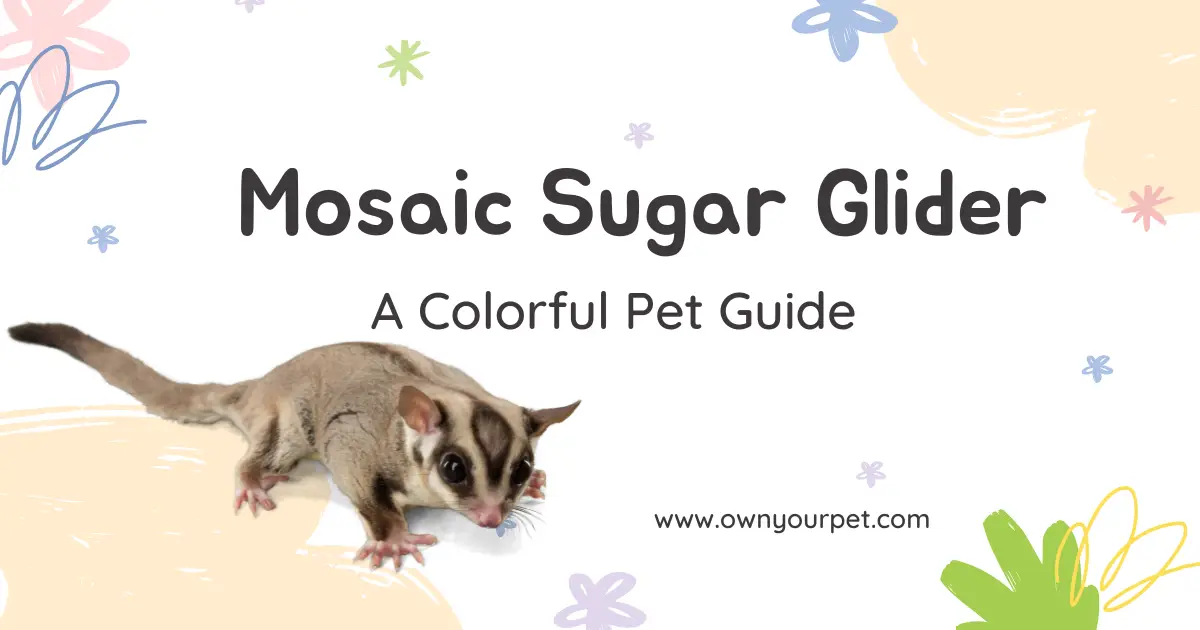Introducing the Mosaic Sugar Glider: A captivating variation known for its intricate mosaic-like patterns. This unique color variation adds an extra touch of allure to these charming creatures. Discover the fascinating world of the Mosaic Sugar Glider as we explore its origins and enchanting characteristics. Prepare to be captivated by its beauty.
Can you breed Mosaic Sugar Gliders?
Yes, Mosaic Sugar Gliders can be bred. However, breeding Mosaic Sugar Gliders requires a good understanding of genetics and responsible breeding practices to maintain and enhance the mosaic pattern in the offspring.
Mosaic Sugar Glider: Everything You Need to Know
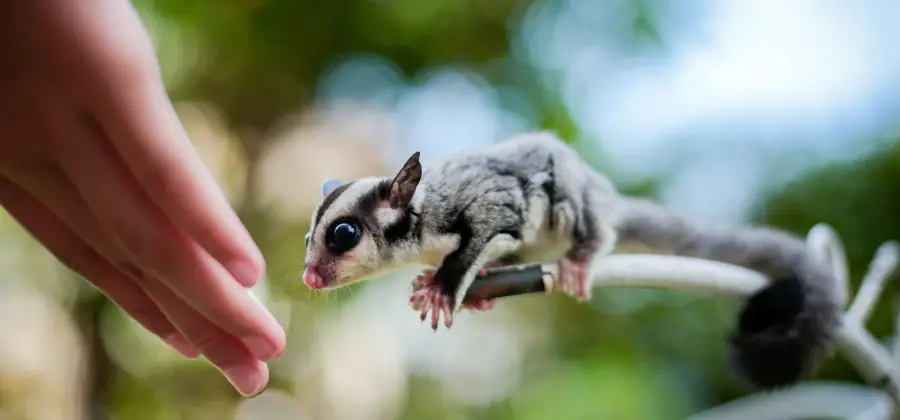
Mosaic sugar gliders are fascinating creatures with unique appearances that set them apart from other sugar gliders. Known for their diverse and seemingly random patterns, these tiny marsupials have become quite popular among exotic pet enthusiasts.
With so many possible pattern combinations, not only are they adorable, but they’re also a captivating example of natural variation.
A mosaic sugar glider isn’t defined by a specific color but rather by the trait of mosaicism. This means any color sugar glider can be considered a mosaic if it showcases two or more populations of cells with different genotypes that have developed from a single fertilized egg.
In simpler terms, mosaic sugar gliders have various patches or patterns of differently colored fur. These combinations can produce some truly remarkable and one-of-a-kind pets.
One notable variation of the mosaic sugar glider is the white mosaic. These gliders have a white base coloring with little to no dark fur. Some may have dark markings on their ears, which can vary in size and pigment. White mosaic sugar gliders can even have leucistic genetics, which makes them especially unique.
With so much room for diversity, it’s no wonder mosaic sugar gliders have captured the hearts and attention of countless admirers worldwide.
Understanding Mosaic Sugar Gliders
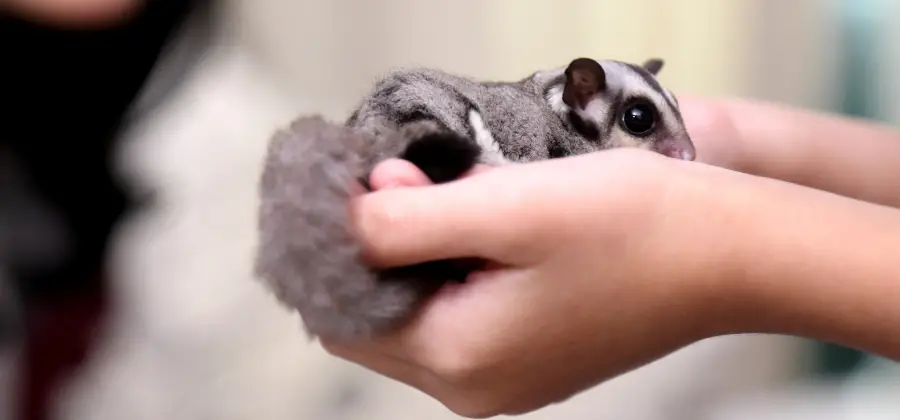
Mosaic sugar gliders are fascinating and unique variations of the sugar glider species. In this section, we’ll explore their color variation and the genetics behind their appearance.
Color Variation
Mosaic sugar gliders exhibit a wide range of patterns on their body, which are completely random. These patterns are made up of varying degrees of white pigmentation. It’s important to note that mosaic is considered a trait rather than a specific color, meaning that any color sugar glider can be mosaic.
Though there can be many different patterns on their body, only five distinct pattern variations are recognized by breeders. These variations include:
- Gray sugar gliders
- White sugar gliders
- Albino sugar gliders
- Cinnamon sugar gliders
Genetics
The genetics of mosaic sugar gliders are complex and intriguing. The unique patterns seen on mosaic sugar gliders are the result of multiple genes interacting with each other.
These genes determine the distribution of white pigmentation on the sugar glider’s body, creating distinct patterns and making every mosaic sugar glider truly one-of-a-kind.
The genetics behind mosaic sugar gliders are not yet fully understood, and researchers continue to study the fascinating combination of genetics involved in creating these beautiful creatures. Nonetheless, these stunning pets never fail to captivate the hearts of their owners and onlookers alike.
With countless colors, patterns, and variations, mosaic sugar gliders are undoubtedly a testament to the incredible diversity of the natural world.
Physical Characteristics
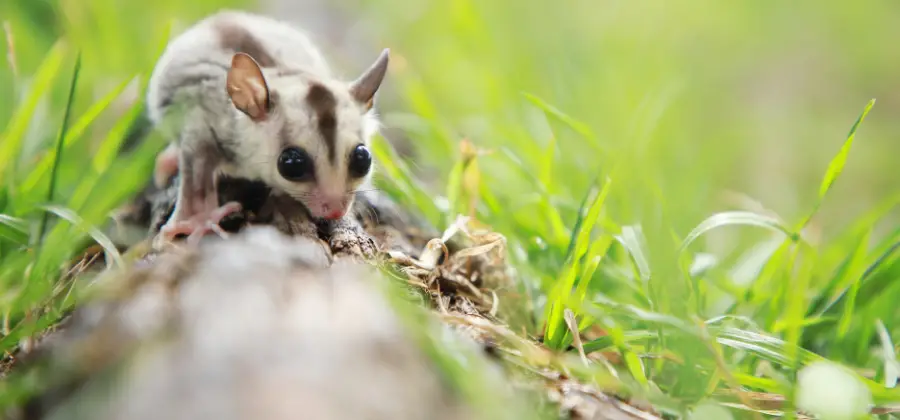
Appearance
Mosaic Sugar Gliders are a fascinating variation of the standard Sugar Glider, known for their unique coloration and patterns. Their fur is predominantly platinum, with darker markings along their back and head. Some Mosaic Sugar Gliders can also feature a white collar and ringtail, further diversifying their appearance.
Unique Traits
One of the most extraordinary features of the Mosaic Sugar Glider is their ability to glide. Like their non-mosaic counterparts, they have gliding membranes that allow efficient movement, enabling them to glide distances up to 165 feet!
Their hind feet can rotate 180°, allowing them to easily climb down trees and land after long glides. Curved claws and special foot pads further aid their climbing abilities.
Here are some key aspects of Mosaic Sugar Gliders’ physical traits:
- Fur color: Predominantly platinum, with darker markings along their back and head
- Mosaic patterns: White collars and ringtails in some specimens
- Gliding abilities: Can glide distances up to 165 feet
- Mobility: Hind feet rotate 180° for easy landing and climbing
- Climbing adaptations: Curved claws and special foot pads provide grip
Mosaic Sugar Gliders are nocturnal creatures, meaning they are more active and alert during the night. This behavior is typical for all Sugar Gliders, including mosaic variations.
When it comes to their appearance, they may feature distinct traits, such as white hands and faces. However, it is essential to remember that individual markings can vary from one Mosaic Sugar Glider to another.
Watch these cute pets:
Breeding and Genetic Information
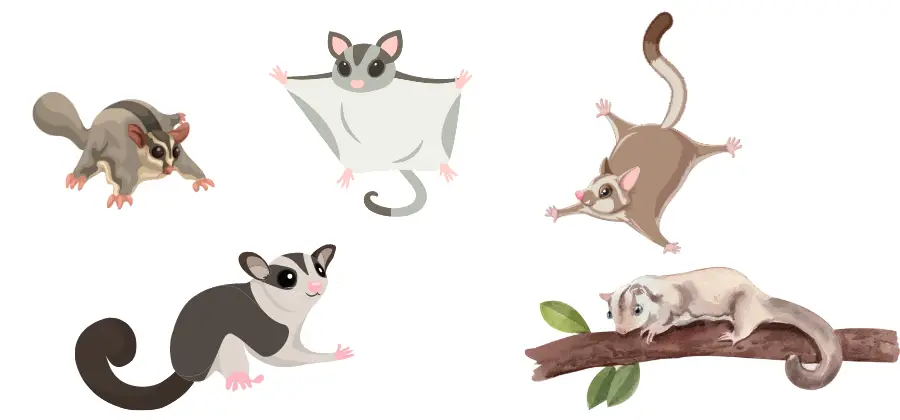
Lineage
When breeding mosaic sugar gliders, it is crucial to ensure they are genetically compatible. Lineages can be tracked via databases like The Pedigree Program, created by Priscilla Price. It allows breeders to view registered sugar gliders’ family trees, helping to determine compatibility before mating.
Recessive and Dominant Genes
Both recessive and dominant genes influence mosaic sugar gliders’ colors and genetics. For instance, the Leucistic gene (Leu) is a recessive trait, meaning both parents must carry the gene to produce a Leucistic offspring.
On the other hand, some traits like the white tail tip are likely dominant or normal traits, meaning only one parent needs to carry the gene.
Sugar glider genetics can be complicated, but understanding them is essential in successful breeding. When working with mosaic sugar gliders, knowing their genetic traits may provide insight into the possible offspring color variations.
Some key points in mosaic sugar glider genetics:
- Recessive traits require both parents to carry the gene (e.g., Leucistic)
- Dominant traits only need one parent to carry the gene (e.g., white tail tip)
- Lineage tracking helps ensure genetic compatibility for breeding
A comprehensive Sugar Glider Genetics Study is ongoing, and more information is being discovered. Breeders should stay updated on the latest findings to make informed decisions when working with mosaic sugar gliders.
Caring for a Mosaic Sugar Glider
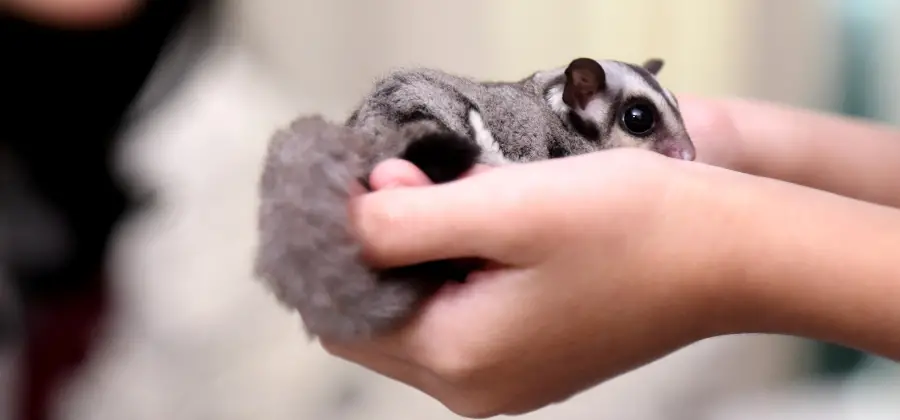
Diet and Nutrition
Mosaic sugar gliders, like all sugar gliders, have unique dietary needs. Providing a healthy diet is essential for their well-being. They thrive on a variety of fruits, vegetables, and protein sources such as insects and cooked meat.
A popular homemade diet recipe for sugar gliders is the Leadbeater’s mix, which consists of honey, water, egg, high protein baby cereal, and a vitamin supplement. Ensure they receive a balanced diet to avoid any nutritional deficiencies.
Health
Sugar gliders, including mosaic variations, can suffer from common health issues such as malnutrition, parasites, and dental problems. Regular veterinary check-ups are crucial to maintain their health.
Familiarize yourself with signs of illness, like lethargy, poor appetite, and changes in behavior, to address any health concerns as soon as possible.
Cage Setup
Mosaic sugar gliders need a spacious and well-ventilated cage for their comfort and well-being. As they are arboreal marsupials, their cage should be taller than it is wide to accommodate their climbing habits.
Include multiple levels, branches, and perches for them to climb and explore. Soft nesting material, like fleece pouches or bedding, should also be provided for your sugar glider to sleep and rest in.
Toys and Enrichment
To keep your mosaic sugar glider happy and mentally stimulated, provide a variety of toys and enrichment options. These can include:
- Exercise wheels (ensure they are safe and solid-surfaced to avoid accidents)
- Hanging toys for climbing and swinging
- Treat-dispensing toys to encourage foraging behavior
- Hideaways or hammocks for extra shelter and comfort
- Branches or ropes to encourage natural climbing instincts
Rotate the toys regularly to maintain your sugar glider’s interest and curiosity. Providing a stimulating environment is crucial for their mental and physical health.
Adopting a Mosaic Sugar Glider
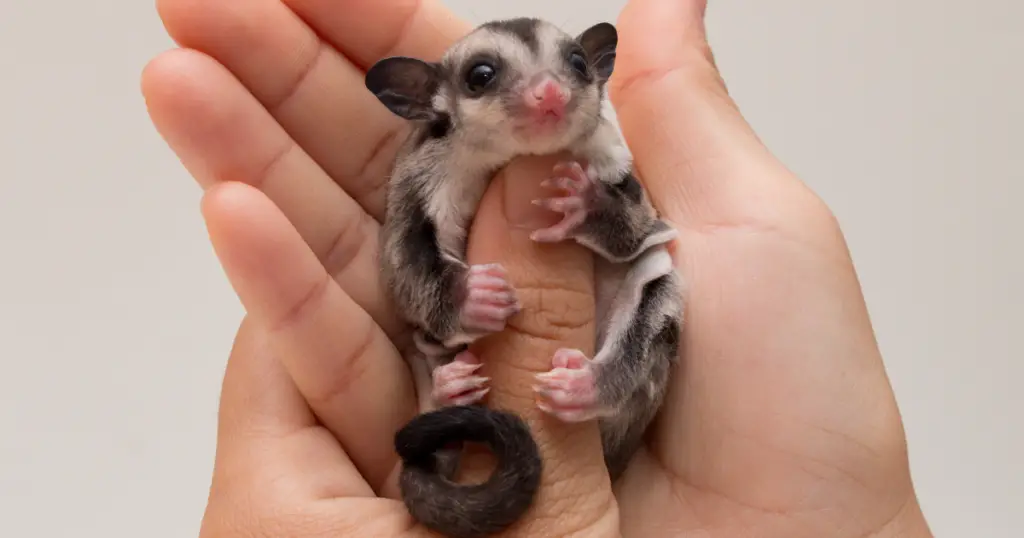
Mosaic sugar gliders are an exotic and unique variation of the sugar glider species. Their rare piebald markings make them stand out among other sugar gliders, and they can be a delightful addition to your family.
In this section, we’ll discuss how to find a breeder, key factors to consider, and financial considerations when adopting a mosaic sugar glider.
Finding a Breeder
It’s essential to find a reputable and experienced breeder to ensure that you adopt a healthy and well-cared-for mosaic sugar glider. You can start by browsing websites like Adopt a Pet, where you can find sugar gliders up for adoption near you.
It’s also a great idea to join online communities or forums to get recommendations and insights from other sugar glider enthusiasts.
Key Factors to Consider
Before adopting a mosaic sugar glider, consider the following factors:
- Your Experience: Mosaic sugar gliders are exotic animals that require specialized care and attention. Make sure you have the time, knowledge, and resources to provide for their needs, especially if you haven’t owned a sugar glider before.
- Your Living Situation: Sugar gliders are social animals and may not be suited for solo living. They do best with other sugar gliders, so consider adopting more than one if you are able.
- Their Space: Sugar gliders need adequate space to climb and explore. Plan on providing a large cage with toys, branches, and hideaways for them to enjoy.
- Diet: Mosaic sugar gliders, like all sugar gliders, have specific dietary needs. They require a balanced diet of fruits, vegetables, protein, and supplements to maintain their health.
- Health: Make sure to get your mosaic sugar glider checked by an exotic pet veterinarian to identify any potential health issues early on.
Financial Considerations
Adopting a mosaic sugar glider comes with some financial responsibilities, including:
- Purchase Price: Mosaic sugar gliders can be more expensive than their standard counterparts due to their unique appearance. Expect to pay more for a Piebald sugar glider when compared to a regular sugar glider.
- Cage and Accessories: You’ll need to invest in a suitable cage, toys, and other essentials to create a comfortable living environment for your new pet.
- Food: Providing a balanced diet for a mosaic sugar glider might require purchasing specialized food items or supplements.
- Veterinary Care: Exotic pet veterinarians may charge higher fees than those catering to more common pets like cats and dogs. Budget for regular check-ups and any unforeseen health issues.
In conclusion, adopting a mosaic sugar glider is a commitment that requires careful thought and planning. With the right breeder and attention to their unique needs, a mosaic sugar glider can become a cherished member of your family.
Sugar Gliders in the Wild
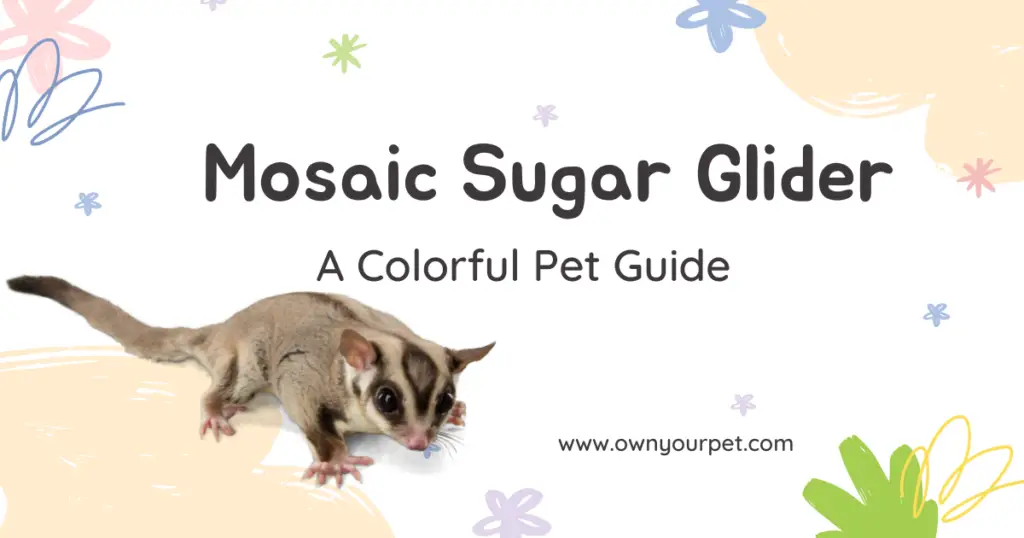
Natural Habitat
Sugar gliders are small, nocturnal marsupials native to Australia, Indonesia, and surrounding regions. These fascinating creatures live predominantly in forests, gliding from tree to tree in search of food. Their natural habitat includes a variety of forest types, from eucalyptus and gum trees to rainforests and woodlands.
- Eucalyptus forests: Sugar gliders are particularly drawn to these types of forests due to the abundance of nectar and sap, which are essential parts of their diet.
- Rainforests and woodlands: They can also be found in these dense, lush environments that provide ample cover, food sources, and nesting opportunities.
Behavior
Nocturnal in nature, sugar gliders are most active during dusk and throughout the night. They are social mammals that live in close-knit family groups, known as colonies. Some common behaviors exhibited by sugar gliders in the wild consist of:
- Gliding: Using the skin flaps between their limbs, sugar gliders can glide up to 165 feet in a single trip, traveling between trees in search of food or escaping from predators.
- Foraging: Sugar gliders have an omnivorous diet that includes nectar, fruit, insects, and even small vertebrates. Their keen sense of smell helps them locate food sources in the dark.
- Communication: These exotic animals communicate using vocalizations, scent marking, and body language to convey messages to their colony members or warn of potential dangers.
In their natural habitat, wild sugar gliders also enter into a state of daily torpor more often than those in captivity. This state of slowed metabolism aids them in conserving energy, especially during the winter months when food sources can be more scarce.
As captivating and adorable as sugar gliders are, it is important to understand and appreciate their unique behaviors, natural habitat, and role in their ecosystems.
